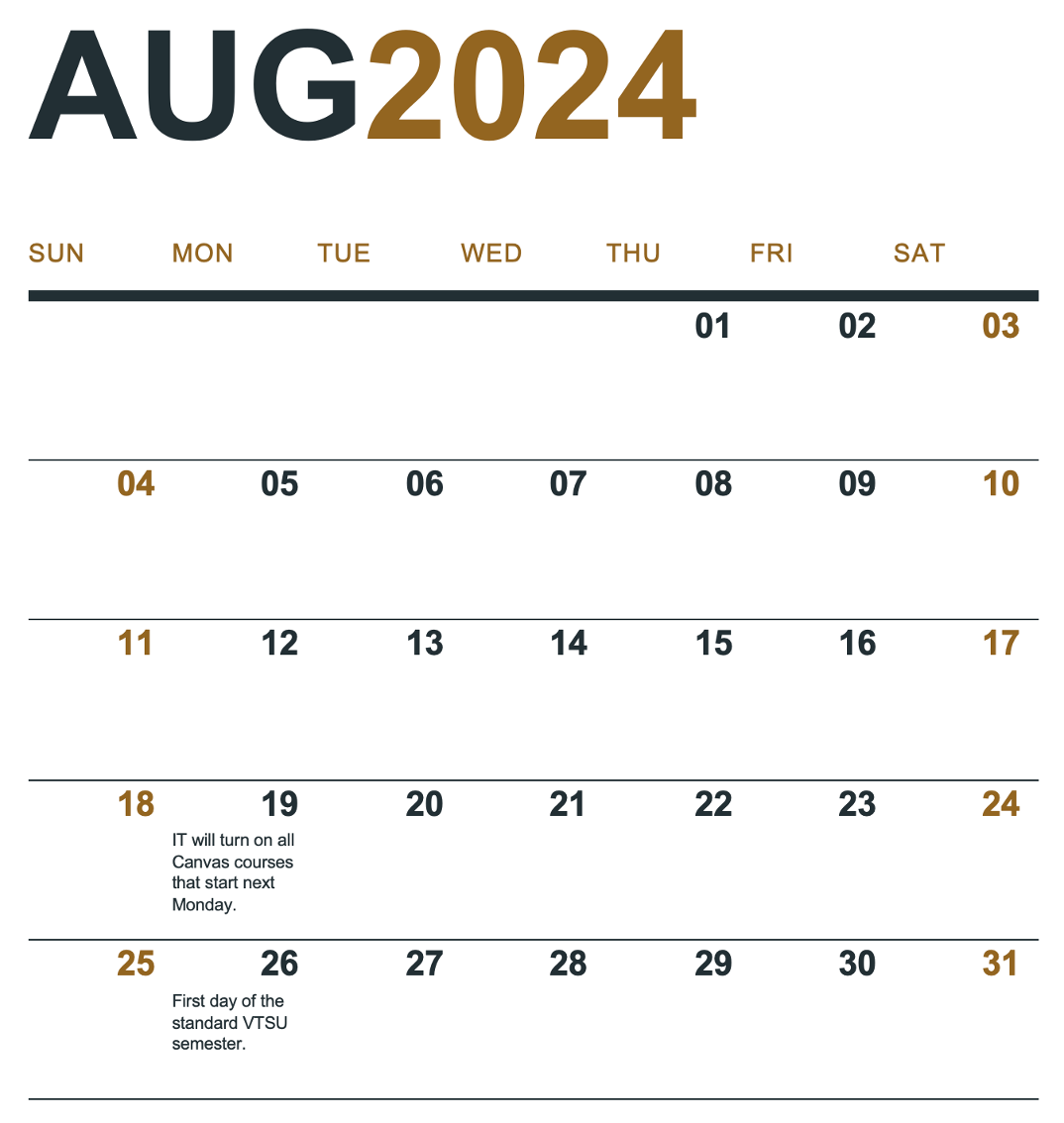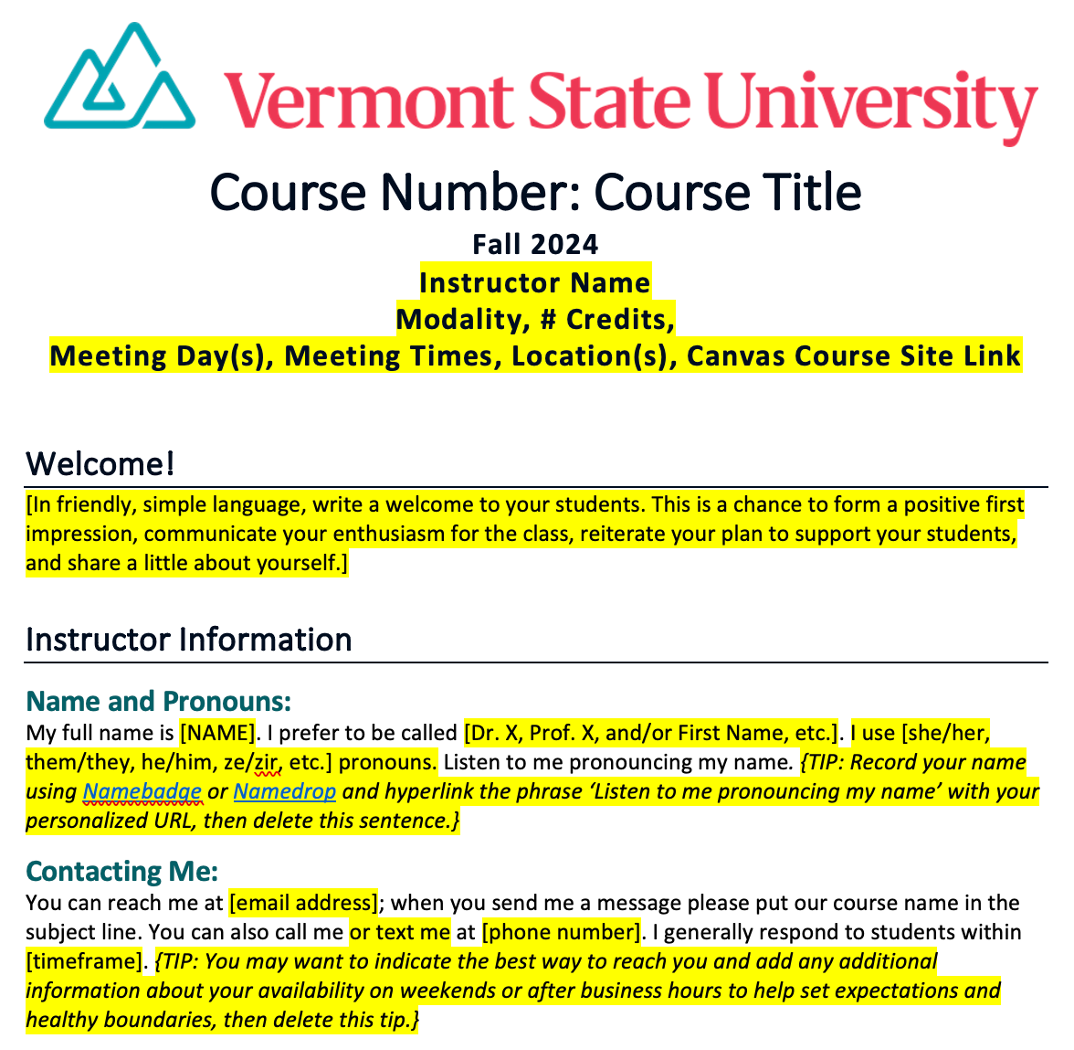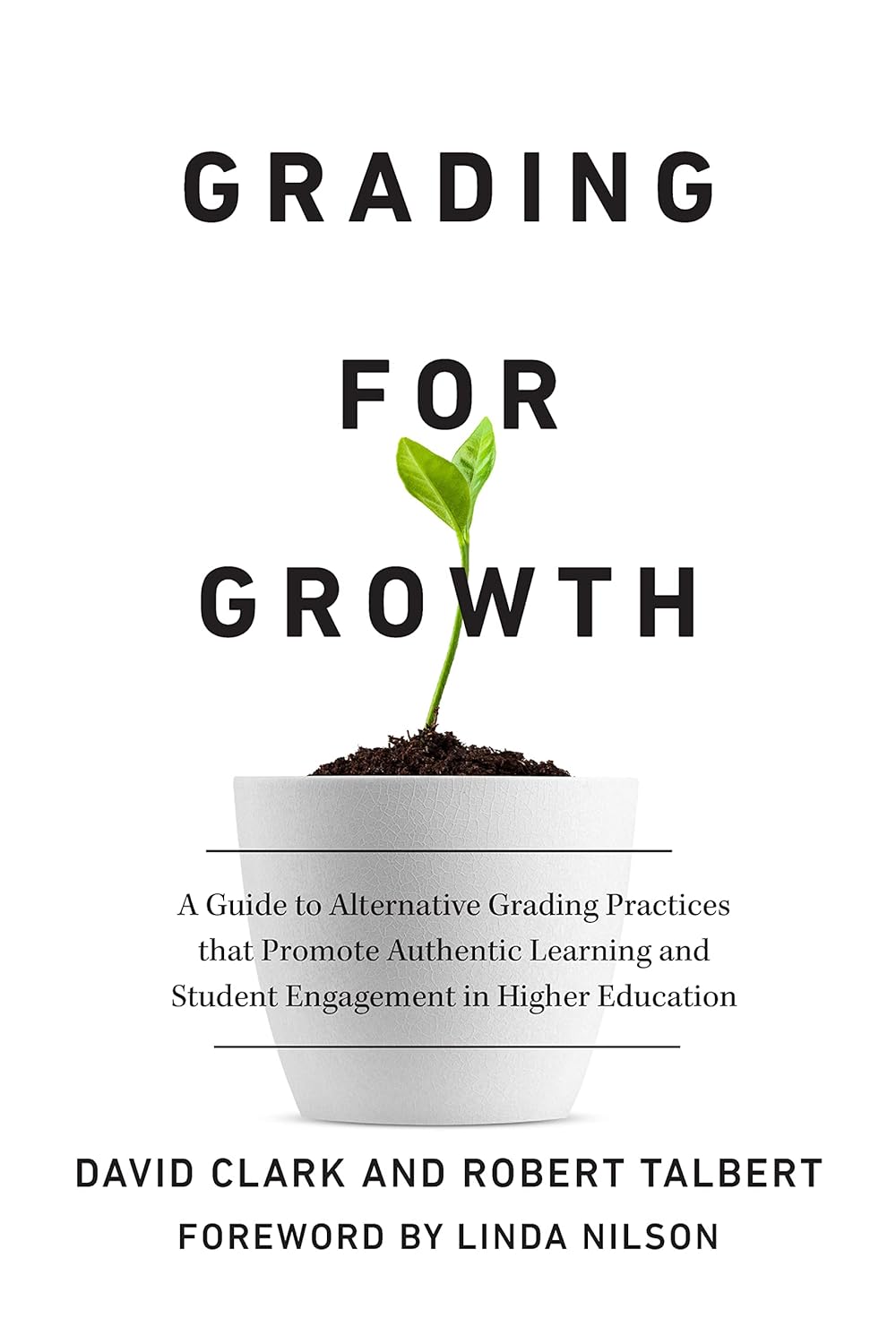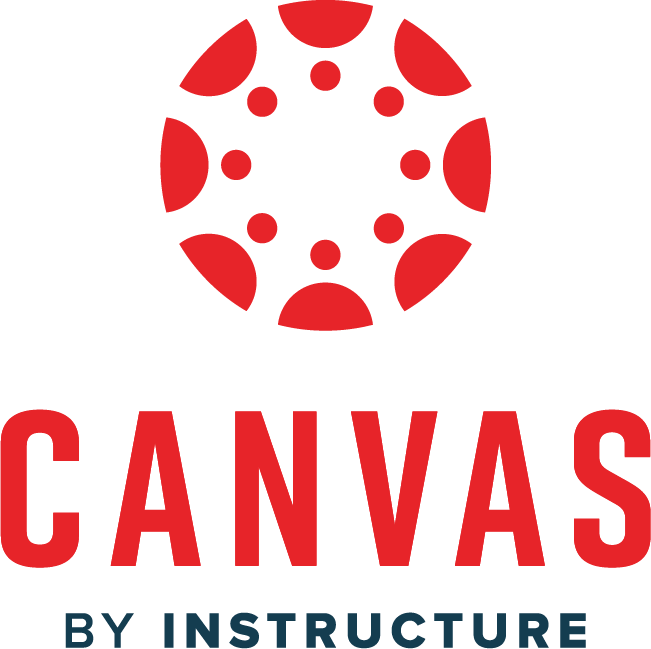August 2024 | Issue 1 | Volume 2 | Previous Issues
Welcome Back!
The Center for Teaching & Learning Innovation would like to welcome back all members of the Vermont State faculty who are returning for the 2024-2025 academic year as well as new instructors who are just joining the institution.
While we look forward to connecting with you live, we also want you to have access to information when you need it and when you have time to engage with it. Each month (sent the first Monday of the month), we’ll be sharing a newsletter to provide you with updates, teaching strategies, campus resources, and dates of future workshops. We also will be sending a mid-month email update (sent the 3rd Monday of the month).
Workshops will be offered throughout the semester, timed with relevance. We will do our best to offer each workshop two times, to accommodate as many schedules as we can. We will also plan to record these events and post links to them on our website. At the bottom of this newsletter, you should see links to our upcoming workshops. Please register for any session you wish to attend. When you register, you’ll receive an automatic email that includes a link to put it on your calendar.
We have been busy this summer in the CTLI, supporting several faculty professional development projects including F2F+ Teaching & Course Development, adoption of OER Resources into F2F+ classes, DEI outcomes in gen ed classes, CNX1 course preparation, teaching with generative AI, and assisting with the onboarding of a cadre of new Nursing faculty. There’s a lot to be impressed with about the quality of teaching and care for students at VTSU.
We look forward to connecting with you in the upcoming year!
Jen and Jeff
Jen Garrett-Ostermiller, Director
Jeff Tunney, Associate Director
Center for Teaching & Learning Innovation @ VTSU
Get to know us!
Problem Solving Update: Canvas Courses Turned On 1 Week Before Start Date
The Historical Problem:
In the past, you have likely experienced the problem of students on the roster for your class, but not enrolled in Canvas. These issues were often not caught until the first week of classes, causing undo stress for students, faculty, and IT staff.

The Solution:
This summer, a group of staff & faculty came together to brainstorm a solution. The best approach identified is to automatically turn all courses on in Canvas 1 week before their start date and then post an announcement for students saying “if you don’t see a course listed, contact IT.” This message couldn’t be posted, historically, because students wouldn’t see their course listed if the instructor hadn’t published it.
This aligns with best pedagogical practice. When courses are available to students in the learning management system 1 week before the start of the semester, they can preview information about the instructor, the course, the textbook and materials, etc. The CTLI recommends populating your course with a welcome message for students to get acquainted with you and what you’re excited about for the upcoming semester. You also have micro-controls in the course. For instance, Canvas module items allow you to set an Availability date – this restricts students’ access to view that content. And Canvas pages can be unpublished until they are ready to be shared. This is especially useful if you’re still working on updating modules or content related to the mid- or end-period of the semester.
VTSU Online instructors are required to have all weekly academic content complete and visible to students via the Canvas Course Homepage Week links prior to the first day of class.
The Learning Technologies Team has compiled Canvas resources to support faculty and students; you can also reach out to them with questions.
Fall 2024 – Syllabus Template Available
Each semester, the CTLI publishes an updated syllabus template, to stay current with policies, context, and the dates of the semester. No matter what modality you’re teaching in, the syllabus can be edited to meet your needs. While the template appears to be lengthy, it will become much shorter when you tailor it to your course (deleting the highlighted language, which is instructional for you).

The Fall 2024 Syllabus Template can be previewed and downloaded from the CTLI website.
If you are re-using an old syllabus, be sure to match these updates from the new templates:
- The Credit Hours and Student Work subsection (under the “About the Course” section) was updated to reflect the new VTSU Credit Hour policy (passed by the Faculty Assembly in March 2024).
- A subsection on Artificial Intelligence was added to the Class Expectations section – we encourage you to create course-level expectations either by writing your own policy or co-creating one with your students.
- The Office of DEISJ was added to the Inclusivity & Equity subsection.
- The schedule of activities was updated with relevant 2024 dates, including space for you to fill in important cut-off dates for adding, dropping, and withdrawing.
The goals of the syllabus template are twofold:
- To make your life easier – you don’t have to look up the dates of the semester or make sure your syllabus reflects current policy.
- To create consistency for students – consistent organization of syllabi, Canvas course spaces, assignment sheets, and other teaching materials reduces cognitive burden (extraneous cognitive load) for students, allowing them more capacity to focus on the important cognitive task of learning. There are additional applications of cognitive load theory for teaching.
Given this second goal of consistency, we also encourage you to adopt the CTLI Canvas Template. This template allows you full freedom to customize the content of the course and focuses exclusively on the organization and structure of the course. The more classes that adopt the template, the easier it is for students to find what they need quickly, reducing frustration and emphasizing class engagement.
Campus Partner Spotlight: Learning Spaces Technologies
Top 5 Tips
The following classroom technology tips have been provided by Vermont State’s Learning Spaces Technologies Team, which is comprised of Tim Dusablon, Jason Kaiser, Jonathan Jacobs, and Sarah Chambers. To learn more about their team and the technologies they support, we encourage you to read the CTLI’s guide on Using Classroom AV for F2F+ Teaching.
Check out your classroom before your first day of classes. This is especially beneficial if you have never taught in the room before, or if new technology has been installed. If you would like training on a classroom system, please reach out to IT via a helpdesk ticket and we would be glad to assist.
Report technology issues to IT. This can be done via a helpdesk ticket as well. Please don’t try to troubleshoot a system unless you have been directed to do so by a member of IT Shared Services. Often times, unplugging cables and wires makes the issues way worse and increases the time it takes to resolve the problem.
When using Zoom in the classroom, run the microphone and speaker check before every class. This is done by pressing the “up carrot” next to the microphone icon in Zoom. Once you click there, you will see the option to “test speaker & microphone.” Clicking on that option will begin the test. First you will hear audio through the speakers. If you do not hear audio, try another output option from the menu in Zoom. After that, you will test the microphone. Speak into the mic system and wait for the playback through the speakers. If you do not hear the playback, try a different microphone option. If you still have issues after trying the speaker and microphone test, please reach out to IT.
If what is projected on the display is different than what is displayed on the computer monitor, try pressing the “Windows” button (in between “Function” and “Alt) and “P” at the same time. This will bring up the display menu on the right hand side of the screen. From there, you have the option to either “Duplicate” or “Extend.” Depending on what meets your needs, select the appropriate option. If this does not work, please contact IT.
Power off the audio visual system when you are done with your class. This not only saves energy and “wear and tear” on the equipment, it prevents a lot of technical issues that arise when a system is left on, particularly in telepresence rooms. You can keep the computer powered on and logged off, but please shut down the A/V system when you have finished using it.
Wishing you the best for the upcoming semester!
The Learning Spaces Technologies Team
iPads for Your Students!
Whole-Class iPads for the Semester

Do you teach a class where drawing or writing on a screen would enhance the student learning experience? For example, are you teaching a math or science course where students are handwriting solutions to problems or solving equations? Or do you teach a class where students are annotating digital documents by hand? The Learning Technologies IT subgroup has iPad kits (iPads, keyboards, Apple pencils) that faculty can check out for the entire semester for every student in the class; the iPad kits are distributed after the add/drop period. If you are interested, please fill out this form, and someone from Learning Technologies will be in touch with you.
Fall 2024 Book Group

Is your interest in alternative approaches to grading piqued? Would you like to read real-world case studies of higher education faculty who’ve implemented alternative grading practices? If so, look no further than the new book Grading for Growth by David Clark and Robert Talbert. These mathematics professors have each been experimenting for 10 years with changes to traditional grading practices that deepen learning and decided to write a book that suggests greater definition of approaches, creates a framework for faculty, shares examples from 17 faculty, and provides a guide for alt grading adoption.
The book group will meet periodically during the semester to discuss the text and share thoughts on alternative grading practices. To sign up for the group, please sign into your VSC account and submit the following form:
Canvas Connections with Sean and Sharon
The following videos and opportunities for individualized Canvas support are part of a joint effort by VSC Senior Instructional Technology Specialist, Sean Dailey, and Instructional Designer, Sharon Sabol, of Vermont State University’s Online Office.
Fall is coming and we want full and part time faculty to know that we are here to support you! Please watch this brief video of Sean and Sharon introducing themselves and the drop-in sessions they will be hosting. There is also a Canvas Video Series that should help in addressing many of your questions. VTSU Online faculty should know that there is a student-centered required template that has been developed to create a consistent student learning environment.

Sean and Sharon’s Drop-In Sessions
Wednesday August 7, 11am-12pm EST
Monday August 12, 2pm-3pm EST
Join us! https://vsc.zoom.us/my/seanrdailey

Teaching with AI

Are you interested in learning more about ChatGPT and other artificial intelligence (AI) tools?
The Center for Teaching & Learning Innovation has partnered with the Auburn University Biggio Center for the Enhancement of Teaching and Learning to provide VTSU faculty members with an opportunity to participate in the award-winning Teaching with AI, a fully-online, self-paced, asynchronous course especially designed for higher education faculty.
The course, which includes content focused on the technical, pedagogical, theoretical, and ethical implications of AI, should be beneficial to beginners as well as more advanced users of this emerging technology.
What are the goals of the course?
- Learn about AI and its implications for teaching and learning in higher education – especially those relating to academic integrity;
- Consider examples (good and bad) of how to redesign courses for AI;
- Experiment with AI tools, redesign assignments, and get feedback;
- Engage in conversations about your thinking on topics related to AI in the college classroom;
- Access a (growing and evolving) repository of research on teaching with AI;
- Engage your department colleagues in the conversation by modeling best practices and sharing your learning to ensure students in your program have a consistent, comparable learning experience no matter who is leading the class.
What is the time commitment and what do I earn by completing the course?
- The total time for an engaged learner to complete all eight modules is between 10 to 15 hours.
- The VTSU licenses expire on April 1, 2025.
- If you complete one assignment at the end of each module, you will earn an AI Explorer digital badge to add to your CV.
How do I sign-up?
The CTLI has purchased licenses for 100 VTSU faculty members, available first-come, first-served. Please submit the form below to express interest. As long as licenses are available, your login credentials will be created and your enrollment into the course will be initiated. Further instructions and correspondence will be emailed to your Vermont State email address.
Teaching Tip: The Power of Five Minutes

Jen Garrett-Ostermiller
Director of the Center for Teaching & Learning Innovation
As we start turning attention to the fall semester, I get excited about getting to know my students, hearing their questions, and sharing interesting and powerful ideas with them. I’m not sure if you sometimes make an ambitious plan for all you want to get through in a single class session; I know that I do! And yet, if we jump right in at the beginning of a class or push right up “to the bell,” there are some missed opportunities.
I like considering these two articles in the context of one another because they address the bookends of any class session: the first and final five minutes. I was trained as an educator to plan a class in 20-minute chunks, given research on attention spans. But when I start with a 20-minute chunk right out of the gate, I’m missing an important opportunity for intentional transition to the class. Likewise, if my focus is on a final 20-minute activity, I may be wrapping up that piece, but not necessarily the whole class session. These articles have changed my teaching practice, and I hope you find some useful ideas, as well.
The first five minutes of class
James Lang, author of (amongst other texts) Small Teaching: Everyday Lessons from the Science of Learning, wrote a blog post on Small Changes in Teaching: The First 5 Minutes of Class. Read more about his four ideas for helping students become present in class:
I’ve combined a couple of these ideas. I often give students a question prompt and ask them to do low-stakes writing (for 1- to 5-minutes). Sometimes, students share their ideas with a partner. The prompt might be a question to get their gears turning about the focus of the upcoming class or it might be related to previous learning. This writing becomes a ritual in class. Additionally, students are given the chance to shift, from their busy lives, into the learning environment in a meaningful way.
The final five minutes of class
Classroom assessment techniques (CATs) have long been encouraged as useful for both students and faculty to generate a picture of where learning is solid and where more time needs to be spent to promote understanding. The blog post on Disrupting Illusions of Fluency by Desai, McCray, & Todd provides an interesting framework for the purpose of CATs – namely this idea that students may be disillusioned about their own competency, highlighting the need for facilitated metacognition.
I don’t think these illusions are intentional by students, and I bet we can all relate if we think about times we’ve been a novice learner. While I exercise with regular walking/jogging, I am not great at independent strength training. Pre-pandemic, I was taking a twice-per-week class at a gym. Having minimal previous exposure to the majority of activities we engaged with each week, I definitely approached the class with beginner’s mind and body. An observer probably would have chuckled at my “illusion of fluency,” as the patient instructor corrected my form despite my absolute certainty that I was doing a move perfectly! However, this disruption of my illusion created opportunities to then ask questions and make adjustments, which are critical to progress.

In most classes, students’ beginning mastery of content knowledge or a skill is less visible than in my strength training class. Faculty can’t just look at students to assess their progress. Spending the final five minutes of class engaging in a one-minute paper, a muddiest point exercise, or a class wrapper (as described in Desai, McCray, & Todd’s blog post) can unveil the areas where students are leaving a class falsely confident about their knowledge and fluency with course materials. With this information, in the very next class, new opportunities can be created for further clarification, hence disrupting the illusion of fluency, replaced by actual fluency and deeper understanding.
Your turn – please write to us!
What are your ideas for effectively starting and ending class, being mindful of the intentions and suggestions posed in these two articles? How can you leverage the power of those 5 minutes? Send us an email at ctli@vermontstate.edu!
Educational App Updates

Microsoft Flip
Microsoft has made the decision to sunset this popular educational app, which was formerly known as Flipgrid. For current users of Flip, it has been removed from mobile app stores and its interface became view only on July 1st, meaning you can no longer create new groups, topics, or videos. In addition, you will only be able to access your Flip account and download existing videos until September 30, 2024.
For faculty members who’ve enjoyed using the Flip app in the classroom, you may be wondering about what alternatives are available. One viable option is Padlet, which is described in the Educational Apps section of the CTLI website. Some additional recommendations are described in this blog and on this Classroom Tech website. Please note that you are always welcome to schedule a consultation with the CTLI if you’d like to brainstorm ideas for transitioning to a new platform.
Canvas Discussions

Instructure, the parent company of the Canvas learning management system launched a redesign of its announcements and discussion features this summer and these changes are reflected in both the Canvas instructor guide as well as the student guide.
If usage related questions arise that aren’t addressed in Canvas’s literature, please reach out to our internal Canvas Support team by submitting an IT ServiceDesk ticket.